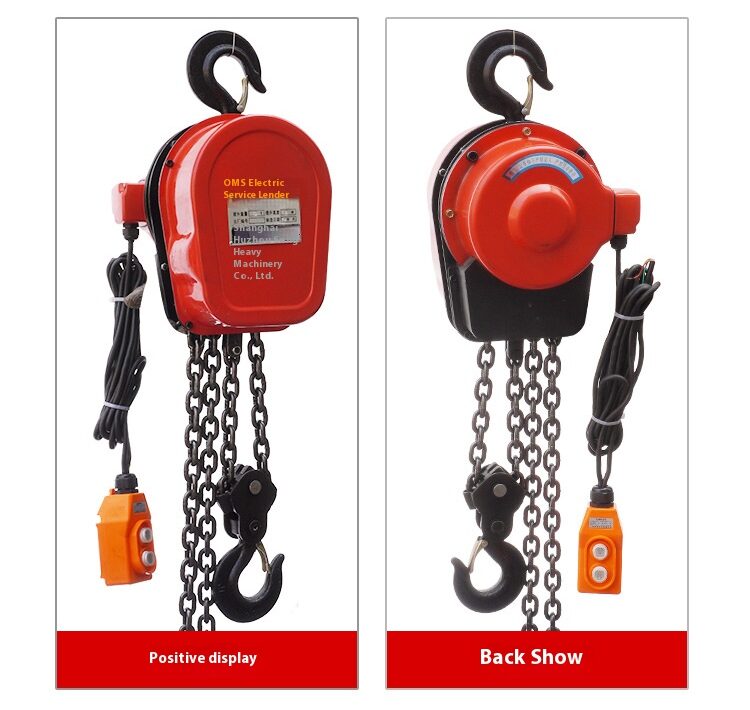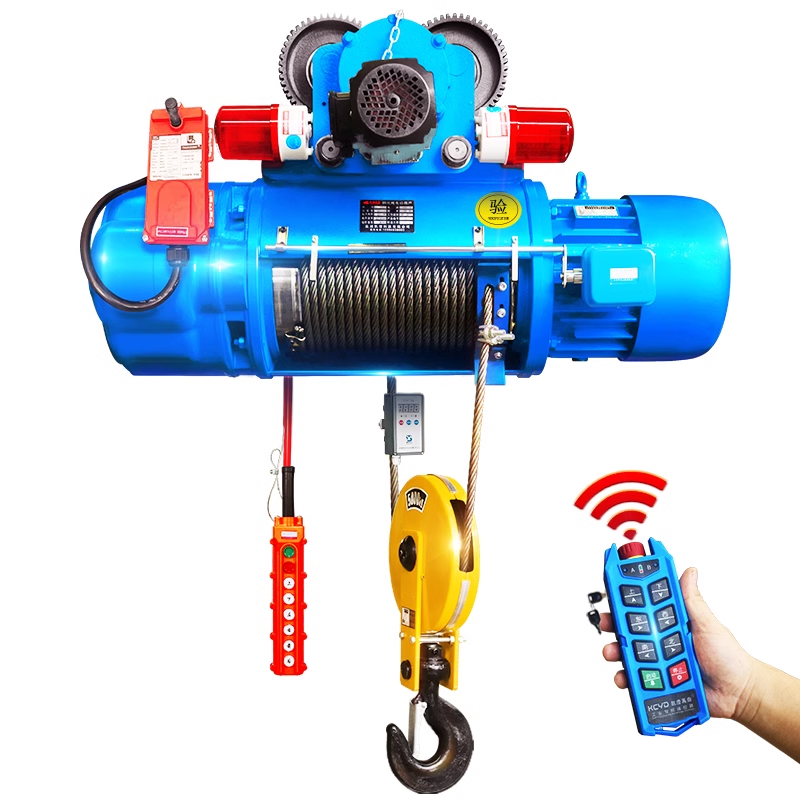Precautions for using electric chain hoists.

Electric chain hoists are lifting devices widely used in factories, warehouses, construction sites, and other locations, known for their efficiency and convenience. However, improper operation may lead to equipment damage or safety hazards. To ensure safe usage and extend the equipment’s service life, this article will provide a detailed introduction to the precautions for operating electric chain hoists, including operating procedures, routine maintenance, and troubleshooting common issues.
Pre-Operation Inspection
1.Hoist Structure Check
Chain: Ensure the chain has no breaks, deformations, or excessive wear, and is properly lubricated.
Hook: Inspect the hook for cracks or deformations, and ensure the safety latch is intact.
Brake: Test the braking performance to confirm reliable stopping and prevent load slippage.
2.Electrical System Inspection
Power Cable: Ensure no damage or aging; check for secure plug connection.
Control Switch: Verify smooth operation of pendant or remote buttons without sticking.
Limit Switch: Test upper/lower travel limits to prevent overrun.
3.Environmental Assessment
Ensure the work area is free of obstacles with stable ground conditions. Avoid use on sloped or slippery surfaces.
Standard electric chain hoists are prohibited in flammable, explosive, or corrosive environments (explosion-proof models must be selected for such conditions).
Safety Regulations During Lifting Operations
1.Proper Hanging and Lifting Procedures
Load Limits: Overloading is strictly prohibited. Always operate within the hoist’s rated capacity.
Balanced Lifting: Ensure the load’s center of gravity is stable to prevent tilting or swinging. Use slings for assistance when necessary.
No Side Pulling: The chain must bear vertical force only. Side pulling may cause chain wear or even breakage.
2.Operating Procedures
Smooth Lifting: Avoid sudden acceleration when raising or lowering loads to minimize shock loading.
No Personnel Lifting: The electric chain hoist is strictly for material handling—never lift personnel or use as a personnel lifting platform.
No Prolonged Suspension: Extended load hanging may cause motor overheating and reduce service life.
3.Emergency Handling Procedures
Power Cutoff & Emergency Stop: Immediately disconnect power if abnormal noises, smoke, or loss of control are observed.
No Forced Operation: If the hoist jams or operates abnormally, cease use immediately and troubleshoot the malfunction.
Routine Maintenance and Servicing
1.Regular Lubrication
Apply lubricant (e.g., lithium-based grease) periodically to moving parts such as chains and gears to minimize wear. Avoid using lubricants with excessive viscosity or impurities.
2.Electrical System Maintenance
Regularly inspect wires, plugs, and switches for aging/damage to prevent short circuits or electric leakage. Keep the remote control dry and replace batteries promptly.
3.Long-Term Storage Guidelines
Store the hoist in a dry, well-ventilated area to prevent rust formation from humidity. Operate the equipment without load every 1-2 months to prevent mechanical component seizure.
Safety Warnings
No Overloading – Overloading is the primary cause of hoist malfunctions and accidents.
No Modifications – Unauthorized removal of safety devices or circuit modifications may cause serious accidents.
Certified Operators Only – Personnel must undergo specialized training and be thoroughly familiar with operating procedures.
Conclusion: The safe operation of electric chain hoists relies on standardized procedures, regular maintenance, and prompt troubleshooting. Strict compliance with safety protocols is essential to ensure equipment efficiency and prevent accidents. For complex malfunctions or electrical issues, always consult certified technicians—never attempt unauthorized disassembly.














